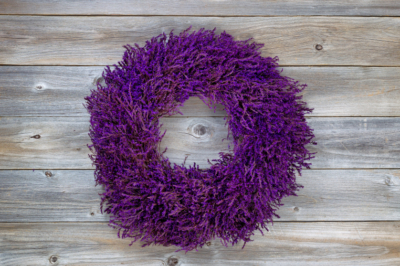Most people know lavender only as an ingredient in perfumes and as a filler in fragrant sachets. In fact, lavandin – a very productive variety of lavender grown in large areas of Provence – is largely used for perfumes. However, the intensely fragrant herb with its high content of essential oils can also be used in many other areas.

Contents
Lavender in the home and garden
The ancient Egyptians used lavender a few thousand years ago, among other things, for body care, a tradition that was continued by the Romans. This original use of the plant is also reflected in its name, as the term “lavender” is derived from the Latin word for “wash”, “lavare”. Even today, lavender scent – though now often synthetically produced – can be found in many cleaning and body care products. The deterrent effect of lavender on annoying insects such as clothes moths or mosquitoes is also well known. For this reason, housewives used to pack fragrant sachets or lavender wands in their linen cupboards. Lavender oil, in turn, is said not only to repel mosquitoes, but also to drive away aphids when applied pure to the affected parts of the plant.
Lavender as a medicinal herb
Lavender has also been used as a medicinal herb for a very long time. Already in the first century AD, the Roman physician Dioscorides described the many uses of the plant. For example, the antiseptic effect of lavender was also known to Roman soldiers, who rubbed themselves with lavender oil before a battle. This was to prevent inflammation in the event of a wound. Today, the calming effect of lavender on the psyche as well as on the gastrointestinal tract is especially well known. Accordingly, it is used, among other things, for sleep problems or gastrointestinal complaints. Lavender can be used internally (for example, as a tea), but also externally (for example, as an ointment or tincture).
Recipe for a soothing lavender tea
If you suffer from problems falling asleep, often can’t get to rest, or are simply stressed, then a cup of lavender tea, drunk just before you go to sleep, might help.
- Take a generous handful of dried lavender flowers.
- Pour boiling water over them.
- Let the mixture steep for about 15 minutes and then strain it.
- Drink the tea in small sips.
- By the way, you can also spray your plants with this decoction (cooled down, of course) and keep pests away in a natural way.
Using lavender in the kitchen
Lavender as a kitchen herb, on the other hand, is rather little known, but many people consider the leaves poisonous. However, this is wrong, because both the young leaves and the flowers are edible and give a wonderful aroma to meat and fish dishes. In fact, especially in Provençal cuisine, you can find many dishes with lavender – even the famous “herbs of Provence” contain it. Don’t be surprised, however, because the blends available in this country usually do not contain lavender.
Tips & Tricks
You can make your own traditional “herbs de Provence” mix from thyme, rosemary, marjoram, fennel (herb), oregano, savory, bay leaf, sage and lavender. You can store the well dried and rubbed herbs in a dark and well-sealed container for several months.









